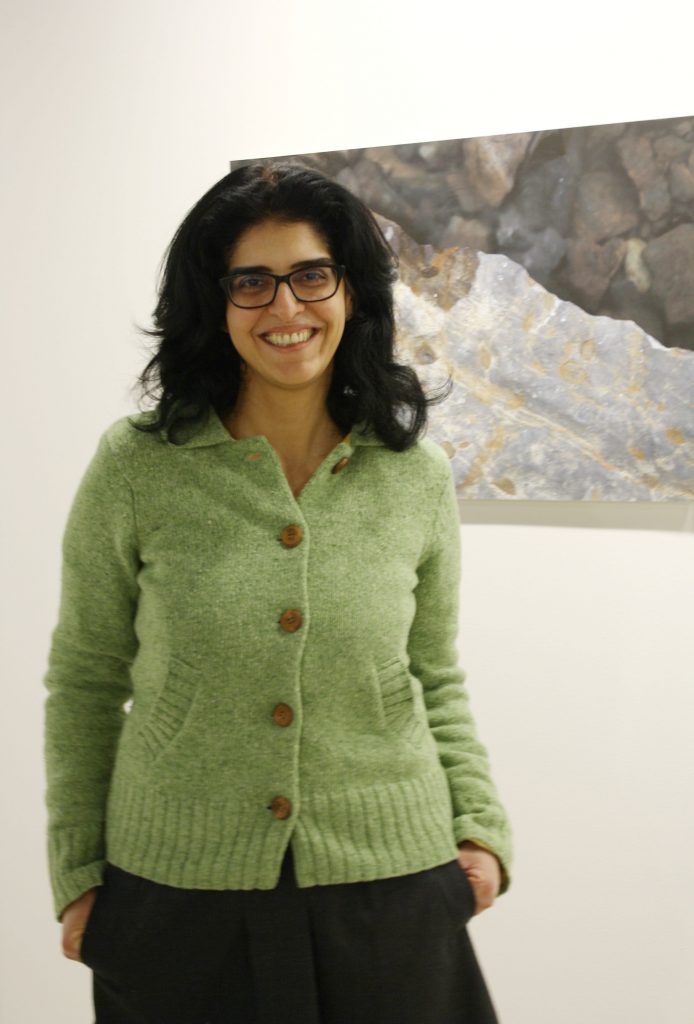Persian stone myth inspires local artist
By Arianna Paquette
Mana Rouholamini’s “de patience (of patience)” exhibit explores curving rock formations and flowing bodies of water that are the gentle, yet persuasive forces that preserve our memories.
The exhibition, which opened on Jan. 26 at City Hall’s Karsh-Masson Gallery, examines the importance of taking action.
Rouholamini is an Iranian-Canadian artist who has the distinction of hosting the gallery’s first new exhibition of 2017. She explained that she was influenced by the Stone of Patience, a mythical object in Persian folklore that she remembered from the stories her grandmother used to tell her.
The Stone features heavily in stories when someone has difficulty making their voice heard, the artist says. They request the mythic stone, tell it the story of their betrayal, and say, “Stone, I’ve given you all the weight that I’ve had, either you break, or I’ll break,” Rouholamini said. She wanted to explore what happens to the stone after the myth ends.
Rouholamini’s interest in the Stone involves looking at people’s interactions with nature, and how nature seems to “remember” some human action.
“It was the idea of throwing something into the water, and how doing so meant that the stone and water always have a memory of your story.”
The exhibit is also modelled on a Persian saying: “Do something good and throw it in the water, and somewhere in the desert, you will get it back. The Stone soaks up the memories of this person, and releases them into the water,” Rouholamini said.
She said the shape of a stone lends itself easily to keeping memory, but that the water is more elusive in its form because it flows and is never constant. She wanted to look at how water or stone each retain different “memories” of human interaction.
Think of it this way: if someone were to pour a can of red paint over a rock, then the rock become stained red as a result. On the other hand, if someone were to pour a can of red paint in the ocean, the ebb and flow of the water would disperse it, making it hard to figure out whether there’s any paint in the water at all. The red paint represents human memory, and the artist is looking at the way our memory is kept in stone versus the way it’s kept in the ocean.
Rouholamini said she also wanted to find a way to connect her Iranian heritage with the Canadian landscape. “I felt like as someone who’s Canadian whose also Iranian, one has all these cultures that exist in you, but I must find the relationship that I have with this land that I come to without knowing its history.”
Karsh-Masson exhibits are chosen by a peer group, which decides to include exhibits based on central themes. This year’s theme is mapping, which Rouholamini explores through mapping the memory of stone and water in her exhibit.
Meaghan Haughian, coordinator of the gallery, said Rouholamini’s exhibit fits into the mapping theme but also demonstrates “the strength and quality of artistic practice happening all around.”
Although Rouholamini doesn’t want to influence how people interact or interpret her work, she hopes that people realize “the importance of taking action, even if that action is very small or an action for yourself.”
The exhibit continues until March 5. Rouholamini is hosting a walkthrough of the exhibit in French and English on Feb 12.

